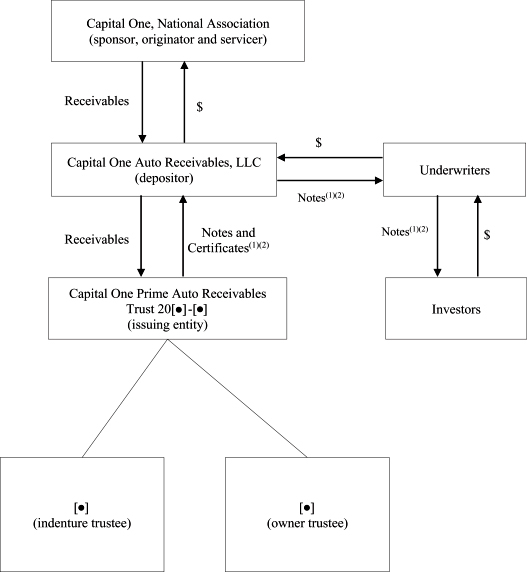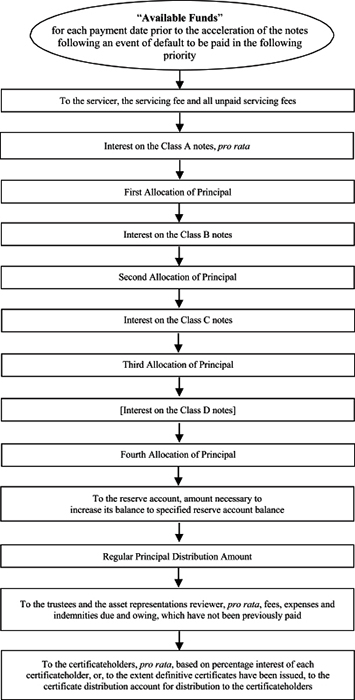All of the foregoing could have a negative impact on the performance of the receivables or the liquidity and market value of your notes and, as a result, you may experience delays in payments or losses on your notes.
The geographic concentration of the obligors in the receivables pool and varying economic circumstances may increase the risk of losses or reduce the return on your notes
The concentration of the receivables in specific geographic areas may increase the risk of loss. A deterioration in economic conditions regardless of reason, or natural disasters, extreme weather events (including as a result of climate change) or civil unrest, in the states where obligors reside may adversely affect the ability and willingness of obligors to meet their payment obligations under the receivables and may consequently adversely affect the delinquency, default, loss and repossession experience of the issuing entity with respect to the receivables of the obligors in such states. See “ —Risks related to the characteristics, servicing and performance of the receivables—Recent and future economic developments may adversely affect the performance of the receivables and may result in reduced or delayed payments on your notes.” As a result, you may experience payment delays and losses on your notes. An improvement in economic conditions could result in prepayments by the obligors of their payment obligations under the receivables. As a result, you may receive principal payments of your notes earlier than anticipated. No prediction can be made as to the effect of an economic downturn or economic growth on the rate of delinquencies, prepayments and/or losses on the receivables. See “—Risks related to certain features of the notes and financial market disruptions—Returns on your investments may be reduced by prepayments on the receivables, events of default, optional redemption of the notes or repurchases of receivables from the issuing entity.”
As of the [statistical] cut-off date, based on the billing addresses of the obligors, approximately [•]%, [•]% and [•]% of the principal balance of the receivables in the receivables pool were located in [•], [•] and [•], respectively.
No other state accounts for more than [5.00]% of the principal balance of the receivables in the receivables pool as of the [statistical] cut-off date. Because of the concentration of the obligors in certain states, any adverse economic factors, natural disasters, extreme weather events (including as a result of climate change) or civil unrest in those states may have a greater effect on the performance of the receivables than if the concentration did not exist, which may result in a greater risk of losses on your notes.
Climate change manifesting as physical or transition risks could adversely affect the sponsor’s auto finance business and obligors and adversely affect the timing and amount of payments on your notes.
The physical risks of climate change include discrete events, such as flooding and wildfires, and longer-term shifts in climate patterns, such as extreme heat, sea level rise, and more frequent and prolonged drought. Such events could potentially disrupt the sponsor’s auto finance business, including its servicing of the receivables, or the operations of obligors or third parties on which the sponsor and servicer rely, including through direct damage to assets and indirect impacts from supply chain disruption and market volatility.
Additionally, transitioning to a low-carbon economy may entail significant policy, legal, technology and market initiatives. Transition risks, including changes in consumer preferences and additional regulatory requirements or taxes, could impact the sponsor’s strategies relating to the servicing of the receivables. For example, changes in consumer preferences may be impacted by consumer perceptions of climate change and consumer efforts to mitigate or reduce climate change-related events by purchasing vehicles that are viewed as more fuel efficient (including vehicles powered primarily or solely through electricity), which may affect the pricing and resale value of the financed vehicles securing the receivables. See “—The rate of depreciation of a financed vehicle could exceed the amortization of the outstanding principal amount of the related receivable, which may result in losses on the receivables.” Physical and transition risks could also affect the financial health of certain obligors in impacted industries or geographies. Obligors living in areas affected by extreme weather and natural disasters may suffer financial harm, reducing their ability to make timely payments on the receivables. If these risks were to materialize in a geographic region in which a large number of obligors are located, their impact could be exacerbated. See “—The geographic concentration of the obligors in the receivables pool and varying economic circumstances may increase the risk of losses or reduce the return on your notes.”
In addition, the sponsor’s reputation and its customer relationships may be damaged as a result of its practices and decisions related to climate change and the environment, or the practices or involvement of the sponsor’s clients, in certain industries or projects associated with causing or exacerbating climate change. Climate risk is interconnected with many risk types. The sponsor and its parent, Capital One Financial Corporation, continue to enhance processes to embed evolving climate risk considerations into their risk management strategies established for risks such as market, credit and operational risks; however, because the timing and severity of climate change may not be predictable, their risk management strategies may not be effective in mitigating climate risk exposure.
These impacts of climate change could, individually or collectively, adversely impact the timing and amount of payments on your notes.
You may suffer losses due to receivables with low contract rates
The receivables in the receivables pool will include receivables that have contract rates that are less than the interest rates on your notes. Interest paid on the higher contract rate receivables compensates for the lower contract rate receivables to the extent such interest is paid by the issuing entity as principal on your notes and overcollateralization is created. Excessive prepayments on the higher contract rate receivables may adversely impact your notes by reducing the interest payments available.
The rate of depreciation of a financed vehicle could exceed the amortization of the outstanding principal amount of the related receivable, which may result in losses on the receivables
The value of any financed vehicle may be less than the outstanding principal balance of the related receivable. For example, new vehicles normally experience an immediate decline in value after purchase because they are no longer considered to be new. As a result, it is highly likely that the principal balance of a receivable will exceed the value of the related financed vehicle during the early years of a receivable’s term. The lack of any significant equity in their vehicles may make it more likely that those obligors will default in their payment obligations if their personal financial conditions change. A default during the earlier years of a receivable’s term is more likely to result in losses because the proceeds of repossession of the related financed vehicle are less likely to pay the full amount of interest and principal owed on that receivable. Further, the frequency and amount of losses may be greater for receivables with longer terms because these receivables tend to have a somewhat greater frequency of delinquencies and defaults and because the slower rate of amortization of the principal balance of a longer term receivable may result in a longer period during which the value of the related financed vehicle is less than the remaining principal balance of the receivable. See “The Receivables Pool—Pool Stratifications” in this prospectus for the percentage of receivables with original terms greater than 72 months. None of the receivables will have an original term greater than 75 months.
20


